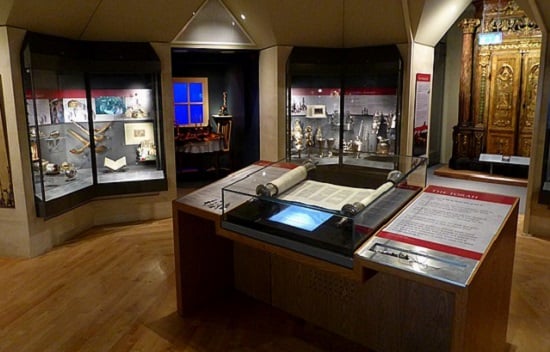
The museum's nationally significant collection will be at risk if an alternative business model can't be found
Photo: Ethan Doyle White
Jewish Museum London pulls out of National Portfolio
The museum will continue to receive £220k a year from Arts Council England as well as an extra £100k to explore different business models.
The Jewish Museum London (JML) has withdrawn from Arts Council England’s (ACE) National Portfolio and its Director has resigned amid financial struggles.
The institution will continue to receive annual funding from ACE. It will be granted £220,000 in of 2020/21 and 2021/22 as well as an extra £100,000 to explore options for a more sustainable business model.
The museum’s heavy reliance on donations has left it vulnerable and with a four-year £4m commitment from a family foundation having expired in 2018, urgent intervention was needed: “The JML would not be financially viable at this moment without this assistance,” said ACE’s London Area Director Joyce Wilson.
READ MORE:
The museum will spend the next two months reviewing its business operations and organisational structure and making contingency plans. This may include a possible new home for its nationally significant designated collection of British Jewish history and culture if it can’t pull itself out of the red.
Abigail Morris, the museum’s Chief Executive since 2012, has resigned ahead of the review. When questioned about the resignation a JML spokesperson said “it was agreed by all to install new leadership to manage the proposed new business model”.
No requirements
JML will no longer have to meet the monitoring and strategic targets expected of NPOs. In an emailed response to ArtsProfessional, a museum spokesperson said the NPO funding agreement is a legal contract the organisation doesn’t have the capacity to meet.
“The business plan that underpinned our current NPO funding agreement historically relied heavily on philanthropic giving and in the current environment this has been harder to maintain.
“The Jewish Museum London Board agreed with the Arts Council that leaving the National Portfolio will give the museum the ability and flexibility to review its business model to determine the best route for its future.”
It formally requested to leave the portfolio in December and withdrew on 13 January.
“Withdrawing from the portfolio releases us from the obligations of the NPO funding agreement so that we can shift the focus onto what is needed for the organisation to survive and thrive.”
‘Bespoke arrangements’
JML is not the first NPO to withdraw from the portfolio: Liverpool Everyman Theatre made a similar request in December 2018 and is also receiving financial support to rework its business model. And English National Opera and Colchester’s Firstsite were also given out-of-portfolio support via “bespoke arrangements” until rejoining in 2018.
Wilson said such deals are only made in “very exceptional circumstances”.
“We do this with organisations that we believe have particular local or national strategic significance and need close support from the Arts Council to help them turn their business models around.
“We know from our experience of funding and working with other organisations that it can take some time to become financially healthy and resilient; we also appreciate how important this organisation is to the national museum sector and to the British Jewish community, its history and culture.”
Some organisations, such as Bristol’s Arnolfini gallery, choose to remain in the portfolio while revising their business models.
Wilson said any NPO can apply for intervention funding “but this would require that they ask to leave the portfolio first, which is something that most organisations do not wish to do unless it is absolutely necessary”.
Growing gap
The museum’s finances have gone south in recent years. Records provided to the Charity Commission show a widening gap between its income and spending.
In 2015, the difference was about £10,000; by 2018, the museum spent £2.71m against income of £2.64m.
Despite this, the accounts note that JML’s education programme has been “expanding year on year”. As the lead organisation in a partnership between London museums and schools, it welcomed more than 32,000 students in the six years to 2018.
Join the Discussion
You must be logged in to post a comment.